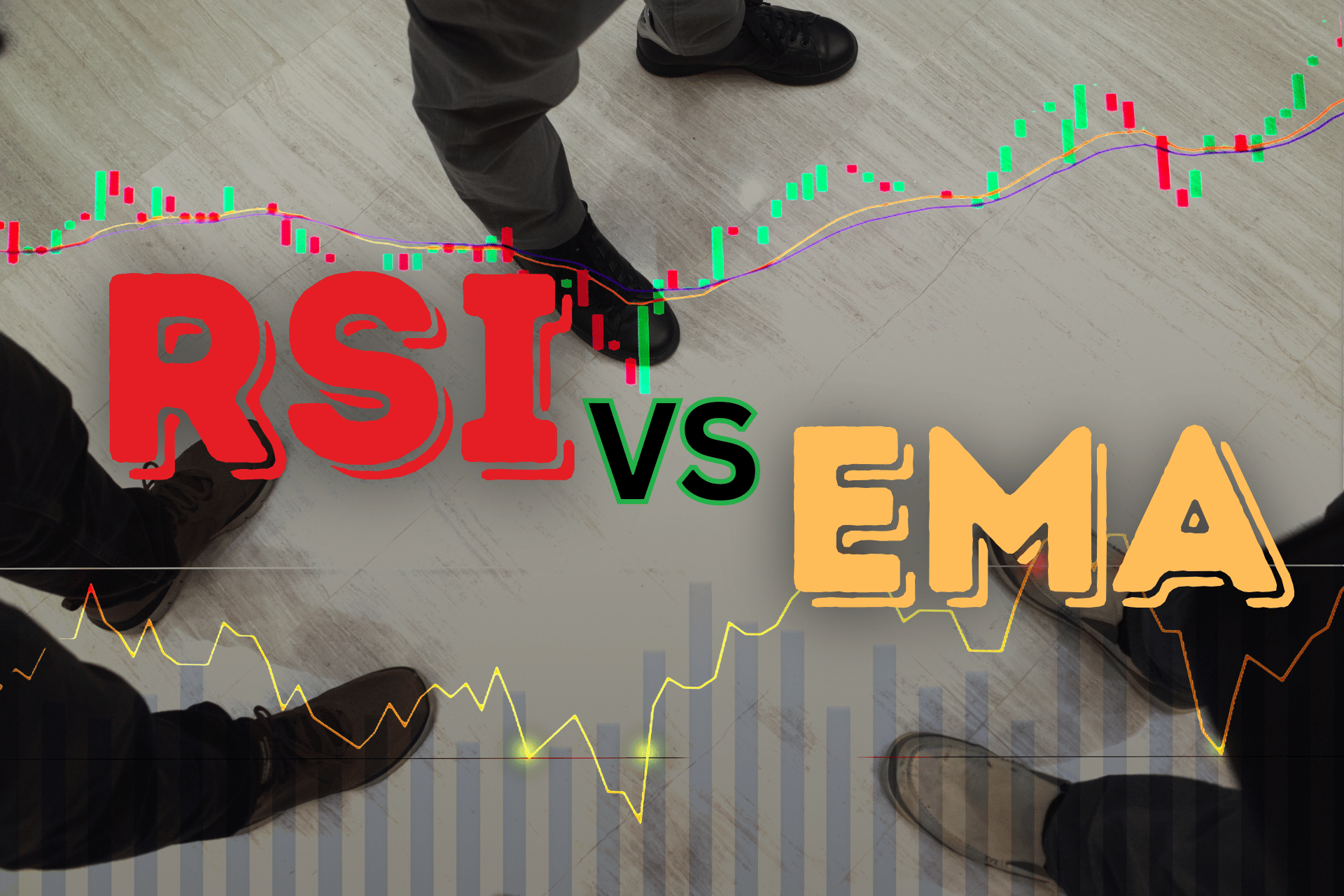RSI vs EMA
The Relative Strength Index (RSI) and the Exponential Moving Average (EMA) are both popular technical indicators used by forex traders to analyze price trends and identify potential trading opportunities. While they serve different purposes, they can be complementary tools in a trader’s toolkit. Let’s explore the differences, pros, and cons of each indicator and discuss when to use them.
Relative Strength Index (RSI):
The RSI is a momentum oscillator that measures the speed and change of price movements. It oscillates between 0 and 100. The RSI compares the magnitude of recent gains to recent losses to determine whether a forex is overbought or oversold.
Pros of RSI:
- Overbought and oversold conditions: RSI helps identify when a forex may be overbought (RSI above 70) or oversold (RSI below 30), suggesting potential reversals in price.
- Divergence patterns: RSI can signal bullish or bearish divergences when the price and the indicator move in opposite directions, indicating a potential trend reversal.
- Trend confirmation: RSI can be used to confirm the strength of an existing trend. Rising RSI during an uptrend or falling RSI during a downtrend can provide confirmation.
Cons of RSI:
- False signals: Like any indicator, RSI can generate false signals, especially in trending markets or during periods of low volatility.
- Lack of precision: RSI provides a general indication of overbought or oversold conditions but does not provide precise timing for entering or exiting trades.
- Market dependency: RSI’s effectiveness can vary depending on market conditions and the specific security being analyzed.
Exponential Moving Average (EMA):
The EMA is a trend-following indicator that focuses on the average price over a specific period. It places more weight on recent prices, making it more responsive to price changes compared to other moving averages. Traders often use different EMA timeframes to analyze short-term and long-term trends.
Pros of EMA:
- Trend identification: EMA helps identify the direction and strength of a trend. When the price is above the EMA, it suggests an uptrend, and when the price is below the EMA, it suggests a downtrend.
- Support and resistance levels: EMA can act as dynamic support or resistance levels, providing potential entry or exit points.
- Smoothing effect: EMA reduces noise and provides a smoother representation of the price compared to other moving averages, making it useful for identifying significant trend changes.
Cons of EMA:
- Lagging indicator: Since EMAs rely on past prices, they inherently lag behind the current price action. Traders may experience delayed signals compared to more responsive indicators.
- False breakouts: EMAs can generate false signals during periods of consolidation or ranging markets, resulting in premature entry or exit points.
- Parameter sensitivity: The effectiveness of EMA can vary depending on the chosen timeframe, and finding the optimal parameters may require experimentation.
RSI vs. EMA:
Comparing the RSI and EMA is not a matter of which one is better but rather understanding their different purposes. RSI focuses on identifying overbought or oversold conditions and provides indications of potential reversals. On the other hand, EMA helps traders identify trends and potential entry or exit points based on the price’s relationship with the moving average.
When to use RSI:
Traders may use RSI when they want to determine if a forex is overbought or oversold, identify potential trend reversals, or confirm the strength of an existing trend. Since RSI is a faster oscillator than EMA and , traders usually prefer RSI to time entries or exits.
When to use EMA:
Traders may use EMA to identify a trend that is forming. However, it is important to note that EMA usually lags the RSI, so for some entries or exits, the execution maybe a tad late. EMA is usually not suitable for day trading due to their lagging nature.
By using a forex trading bot like ForexHero, a trader can implement RSI and/or EMA trading strategies easily.

